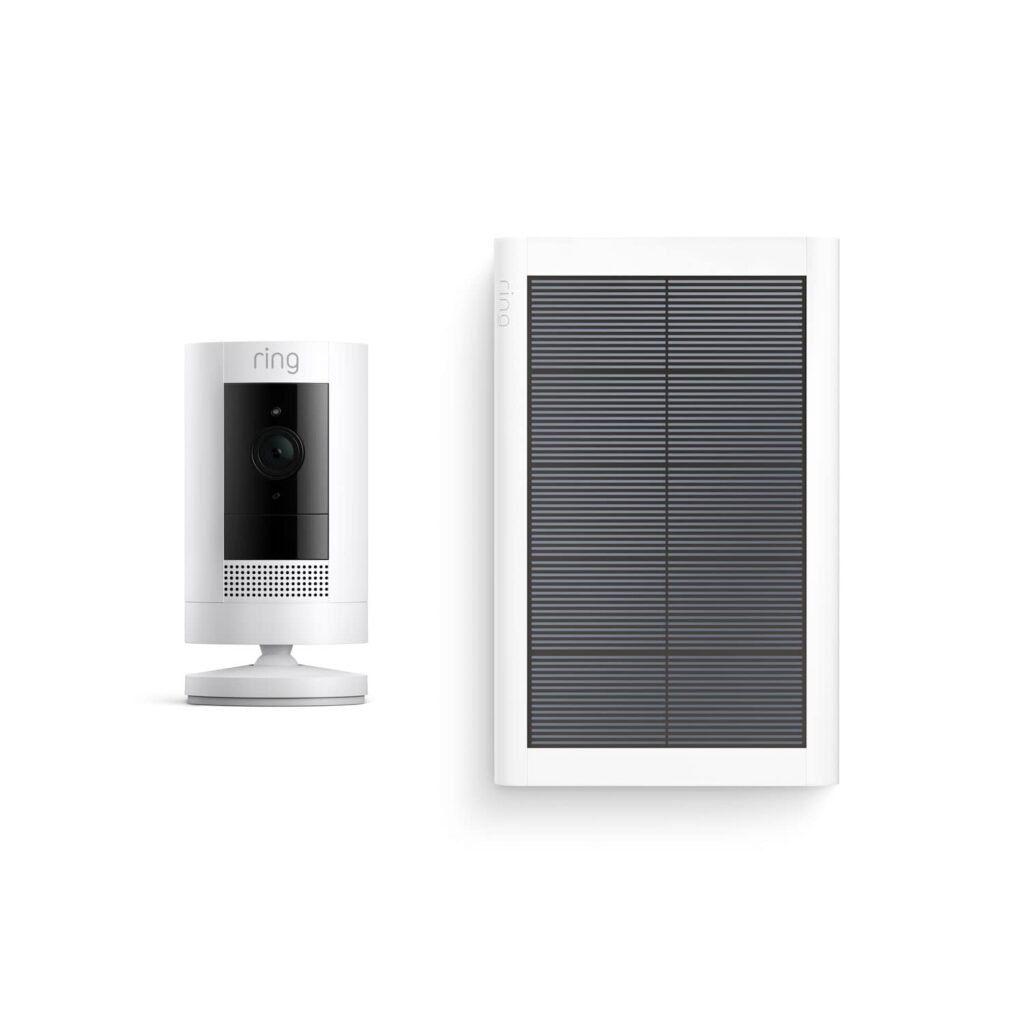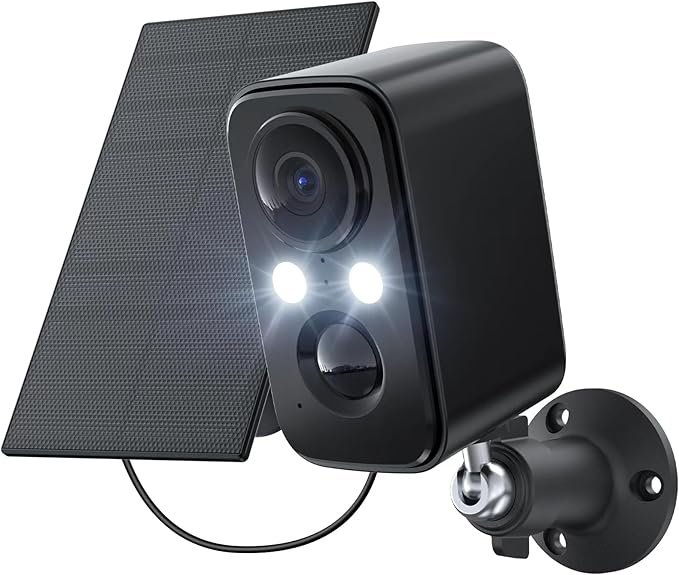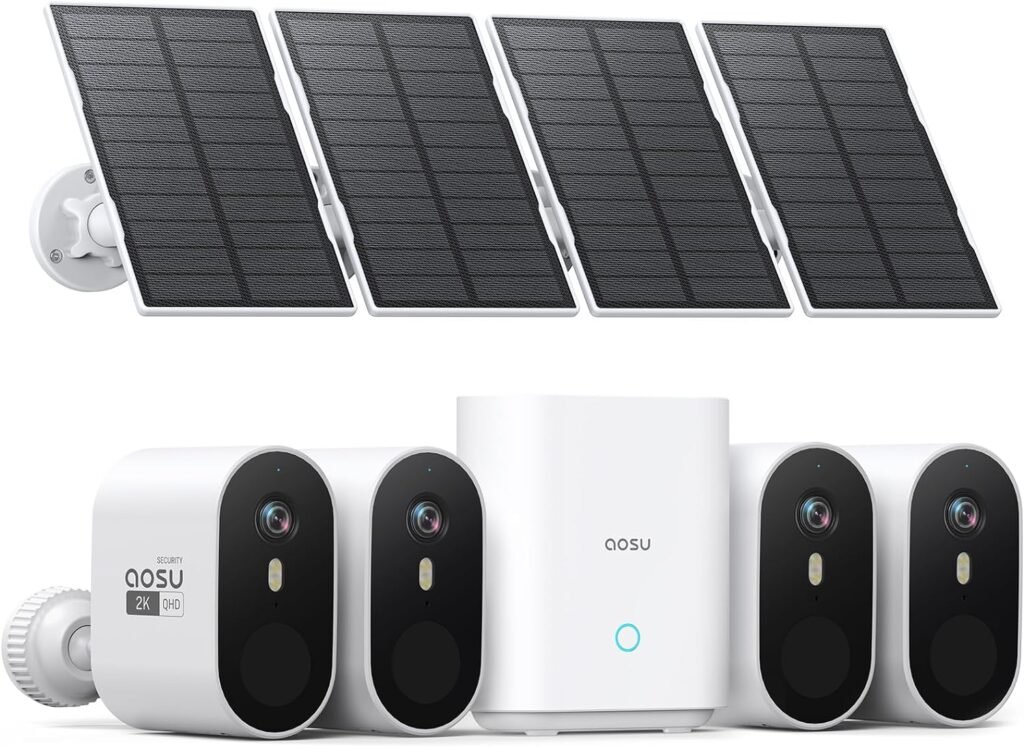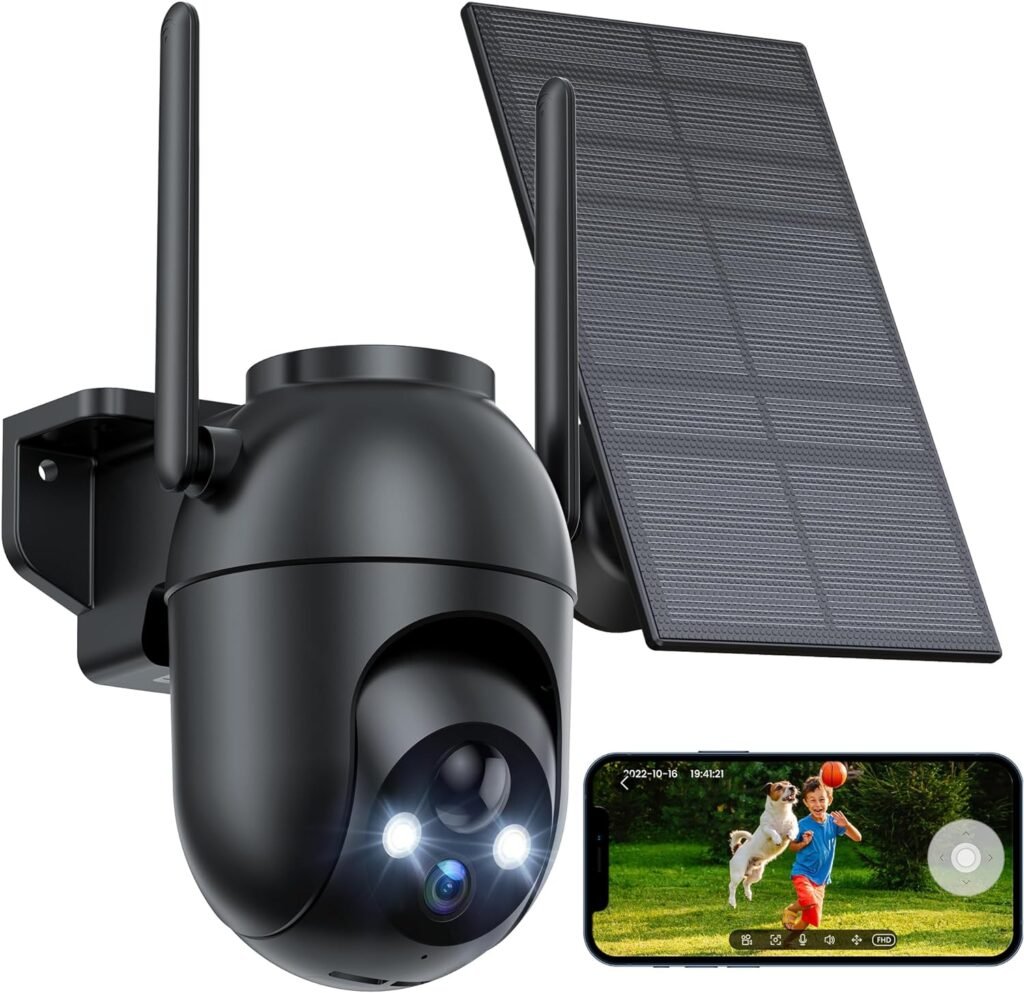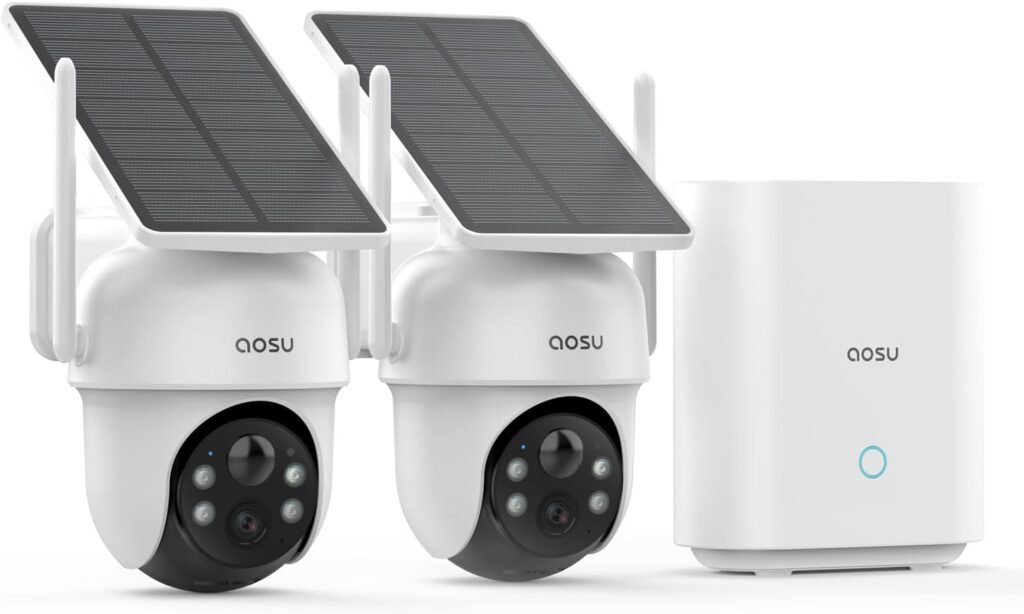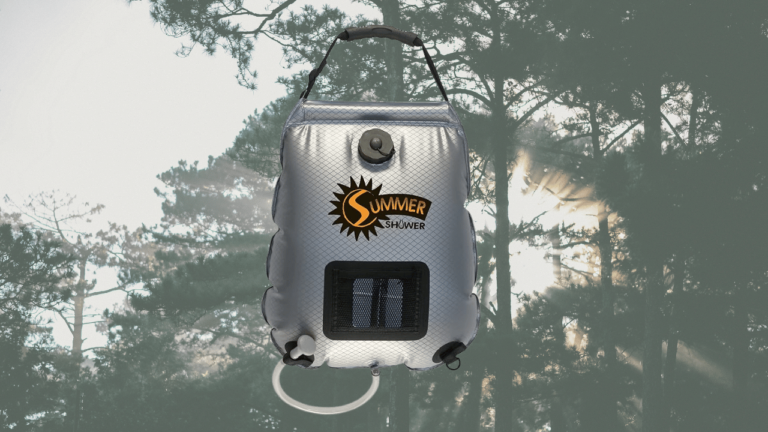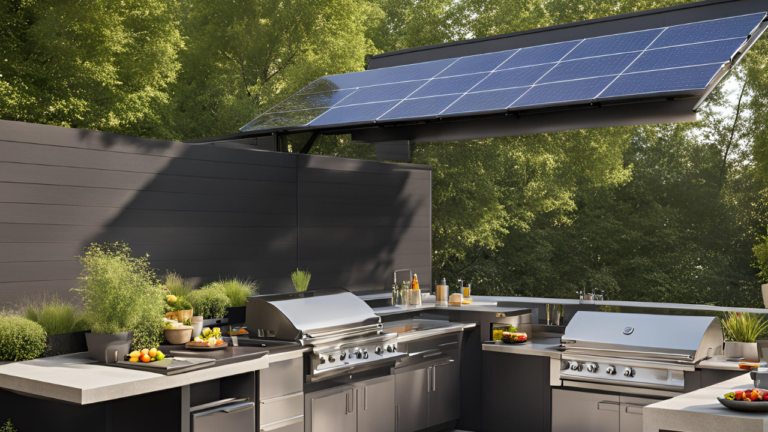
Imagine having a tireless guardian watching over your remote property, powered by nothing but the sun’s rays. Welcome to the future of off-grid surveillance! Solar security cameras for remote locations are revolutionizing the way we protect and monitor our most isolated assets. Whether you’re safeguarding a secluded cabin, keeping an eye on wildlife, or securing a remote construction site, these innovative devices offer unparalleled protection and peace of mind.
Did you know that top-tier solar security cameras for remote locations can provide over 150 days of continuous surveillance on a single charge? That’s right – no power cables, no battery changes, just uninterrupted monitoring powered by sustainable solar energy.
This article will dive deep into the world of solar-powered security, exploring everything from the basics to advanced features and top product recommendations.
So, let’s shed some light on the brilliant world of solar security cameras for remote locations and discover how you can harness the power of the sun to keep your off-grid spaces safe and secure!
- Understanding Solar Security Cameras for Remote Locations
- Key Features to Look for in Solar Security Cameras for Remote Locations
- Top 5 Solar Security Cameras for Remote Locations in 2024
- Installation and Placement Tips for Remote Solar Cameras
- Maintaining and Troubleshooting Solar Security Cameras for Remote Locations
- Integrating Solar Security Cameras with Other Security Systems
- Legal Considerations for Remote Surveillance
- FAQs About Solar Security Cameras for Remote Locations
- Conclusion: Illuminating the Future of Remote Security
Understanding Solar Security Cameras for Remote Locations
What Are Solar Security Cameras?
Solar security cameras for remote locations are innovative surveillance devices that combine high-quality video capture capabilities with solar power technology. These cameras are specifically designed to operate in areas where traditional power sources are unavailable or impractical, making them ideal for off-grid surveillance systems.

Key Components of Solar Security Cameras
- Solar Panel: Captures sunlight and converts it into electrical energy.
- Rechargeable Battery: Stores energy for use during nighttime or cloudy periods.
- Camera Unit: Captures video and images, often with night vision capabilities.
- Wireless Transmitter: Sends data to your monitoring device or cloud storage.
- Motion Sensors: Activates the camera when movement is detected.
- Weatherproof Housing: Protects the internal components from the elements.
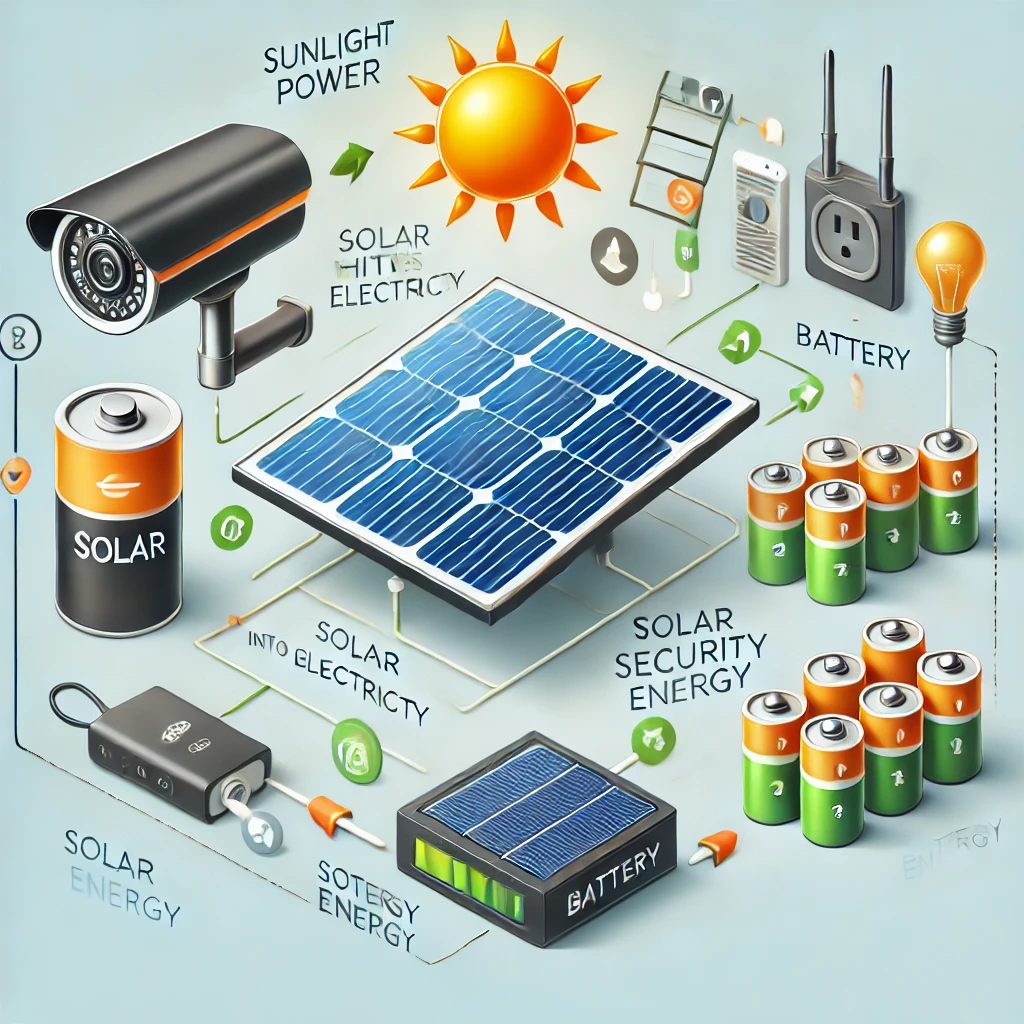
How Solar Power Works in These Devices
Solar security cameras for remote locations operate on a simple yet effective principle:
- The solar panel collects sunlight during the day.
- This sunlight is converted into electrical energy.
- The energy is used to power the camera and charge the internal battery.
- During nighttime or cloudy periods, the camera runs off the stored battery power.
- The cycle repeats daily, ensuring continuous operation.
Advantages of Solar Security Cameras in Remote Settings
- Energy Independence: No need for electrical outlets or regular battery changes.
- Cost-Effective: Saves money on electricity bills and reduces maintenance costs.
- Eco-Friendly: Utilizes clean, renewable energy, aligning with sustainable practices.
- Flexibility: Can be installed in locations far from traditional power sources.
- Low Maintenance: Fewer components that can fail compared to wired systems.
- Scalability: Easily expand your security network without worrying about power constraints.
Key Features to Look for in Solar Security Cameras for Remote Locations
When choosing solar security cameras for remote locations, consider the following essential features:

1. Solar Panel Efficiency and Battery Life
- Look for high-efficiency monocrystalline or polycrystalline solar panels.
- Check the battery capacity and expected runtime on a full charge.
- Consider models with power-saving modes or adjustable settings.
2. Video Quality and Night Vision Capabilities
- Opt for cameras with at least 1080p resolution for clear footage.
- Ensure the camera has strong night vision capabilities, preferably with infrared LEDs.
- Look for cameras with a wide field of view to cover more area.
3. Wireless Connectivity and Data Transmission
- Choose cameras with reliable 4G LTE connectivity for remote areas.
- Consider the data plans and storage options available.
- Look for cameras with efficient video compression to minimize data usage.
4. Weather Resistance and Durability
- Check the IP rating for water and dust resistance (IP66 or higher is ideal).
- Look for cameras designed to withstand extreme temperatures.
- Consider vandal-resistant features for added security.
5. Motion Detection and Alerts
- Opt for cameras with advanced motion detection to reduce false alarms.
- Ensure the camera can send real-time alerts to your smartphone or email.
- Look for customizable motion zones and sensitivity settings.
6. Storage Options
- Consider cameras with both local storage (SD card) and cloud storage options.
- Check the cloud storage plans and their costs.
- Look for cameras with overwrite features to manage storage efficiently.
Top 5 Solar Security Cameras for Remote Locations in 2024

Ring Stick Up Cam Solar~Best Overall
Key Features:
- Two-Way Audio: See, hear, and speak to visitors from your phone, tablet, or Echo device.
- Solar-Powered: The camera is powered by a solar panel, ensuring continuous operation with minimal maintenance.
- Privacy Features: Customizable privacy zones and audio privacy settings allow you to focus on what’s relevant to you.
- Live View: Check in on your home at any time through the Ring app with real-time video streaming.
- Ring Protect Plan: Optional subscription allows for video recording, review of footage for up to 180 days, and sharing capabilities.
- Versatile Mounting: Can be placed on a flat surface or mounted to a wall, with an optional ceiling mount available.
- Multi-Device Connection: Connect multiple Stick Up Cams to the Ring app for comprehensive home coverage.
- Alexa Integration: Pair with Alexa for added convenience and control.
Here’s a table outlining the pros and cons:
| Pros | Cons |
|---|---|
| Eco-Friendly Power Source: Solar power ensures continuous operation with minimal maintenance. | Subscription Required for Full Features: A Ring Protect Plan is needed for video recording and extended storage. |
| Easy Setup: Simple installation by plugging in the solar panel and connecting to Wi-Fi. | Dependence on Wi-Fi: Requires a stable Wi-Fi connection for optimal performance. |
| Customizable Privacy: Control what the camera monitors and records with privacy zones and audio settings. | Mounting Hardware Sold Separately: The ceiling mount must be purchased separately. |
| Flexible Placement: Can be placed on a flat surface or mounted to a wall. | |
| Enhanced Home Security: Real-time monitoring and interaction with visitors through the app. | |
| Weather-Resistant Outdoor Camera | |
| Alexa Integration: Pairs with Alexa for added convenience. |
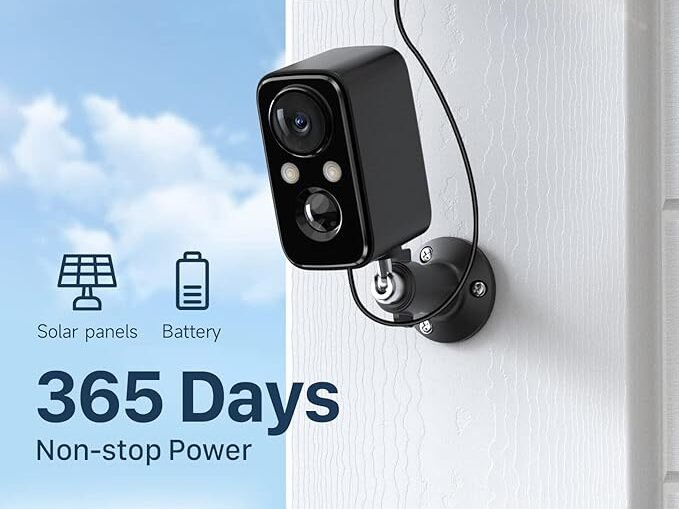
IHOXTX SOLAR SECURITY ~ Best For Home Security
Key Features
- 2K Resolution: Offers enhanced clarity, reducing mosaic effects for clearer video quality.
- IP66 Waterproof: Durable design ensures operation in various weather conditions.
- Alarm Sound: Automatically or manually triggers an alarm to deter intruders.
- Intelligent Human Detection: Differentiates between people, animals, and vehicles.
- Easy Setup & Storage: Simple installation with options for SD card or cloud storage.
Pros and Cons Table
| Pros | Cons |
|---|---|
| High-Quality Video: 2K resolution for clearer footage. | Limited Wi-Fi Compatibility: Supports only 2.4GHz Wi-Fi. |
| Weatherproof: IP66 rating ensures all-weather functionality. | Alarm Sound May Disturb Neighbors: Be cautious when using the alarm feature. |
| Customizable Detection: Adjust settings for specific motion detection needs. | SD Card Not Included: Must purchase separately for local storage. |
| Multiple Storage Options: Choose between SD card and cloud storage. | Limited 5G Support: Not compatible with 5GHz Wi-Fi networks. |
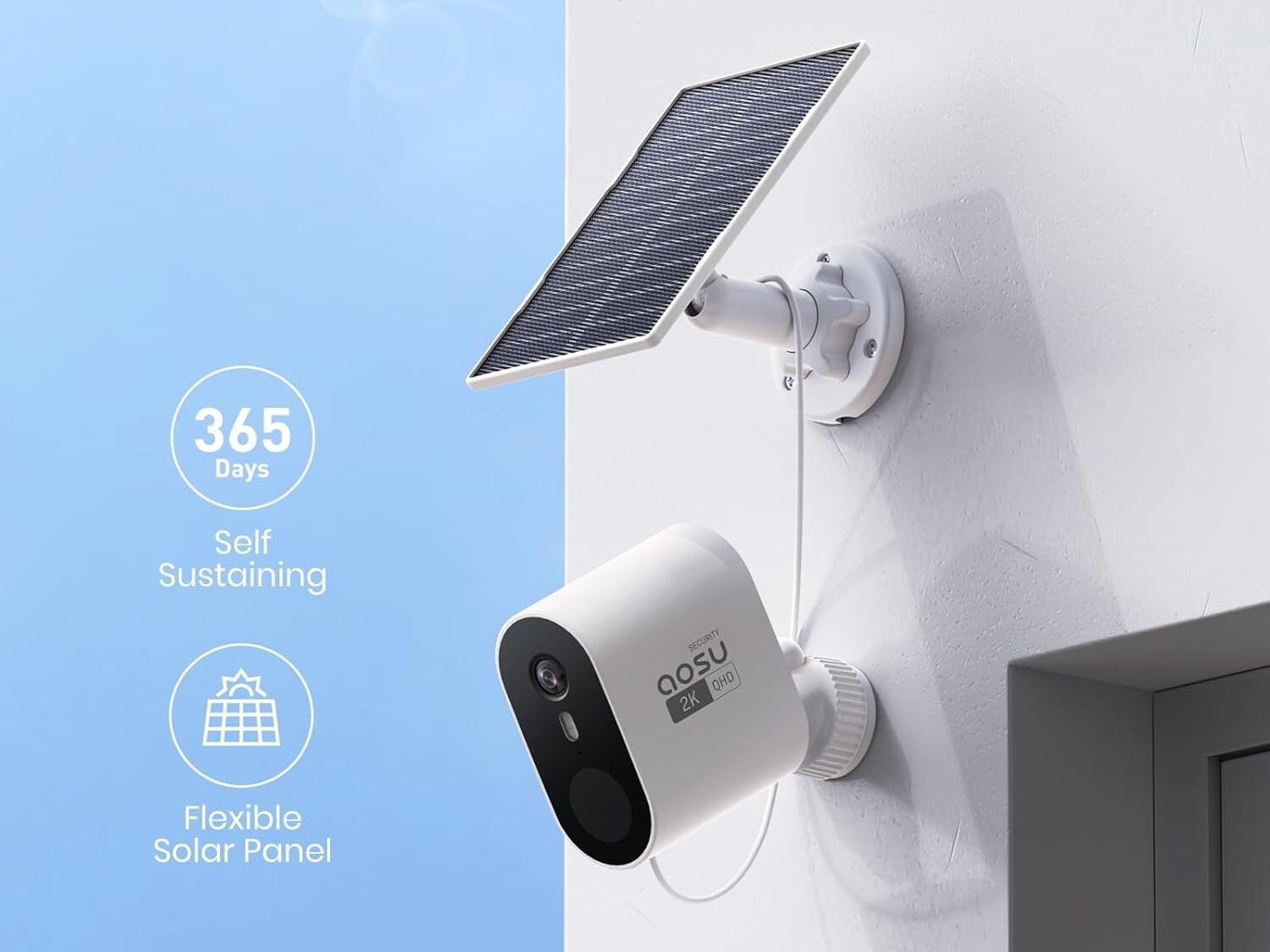
AOSU Solar Security ~ Comprehensive Outdoor Security
Key Features
- 2K QHD Resolution: Delivers clear, high-quality video with 6x zoom capability.
- 166° Ultra-Wide View: Provides broad coverage without the need for camera rotation.
- Forever Solar-Powered: Operates year-round with minimal sunlight.
- No Monthly Fees: 32GB local storage with secure, encrypted data.
- Multi-Cam Streaming & Cross-Cam Tracking: Monitor up to 4 cameras simultaneously with seamless playback.
Best For
- Comprehensive Outdoor Security: Ideal for homeowners seeking a reliable, cost-effective security system with extensive coverage and no hidden fees.
Pros and Cons Table
| Pros | Cons |
|---|---|
| High-Resolution Video: 2K QHD resolution with 6x zoom. | Cloud Storage Optional: Additional fees for cloud storage. |
| No Monthly Fees: Local storage included, eliminating recurring costs. | Limited Indoor Use: Primarily designed for outdoor use. |
| Solar-Powered: Ensures continuous operation with minimal sunlight. | Initial Cost: Higher upfront investment compared to basic models. |
| Wide-Angle Coverage: 166° lens covers more area, reducing blind spots. | Shipping Costs: High shipping and import fees for some locations. |
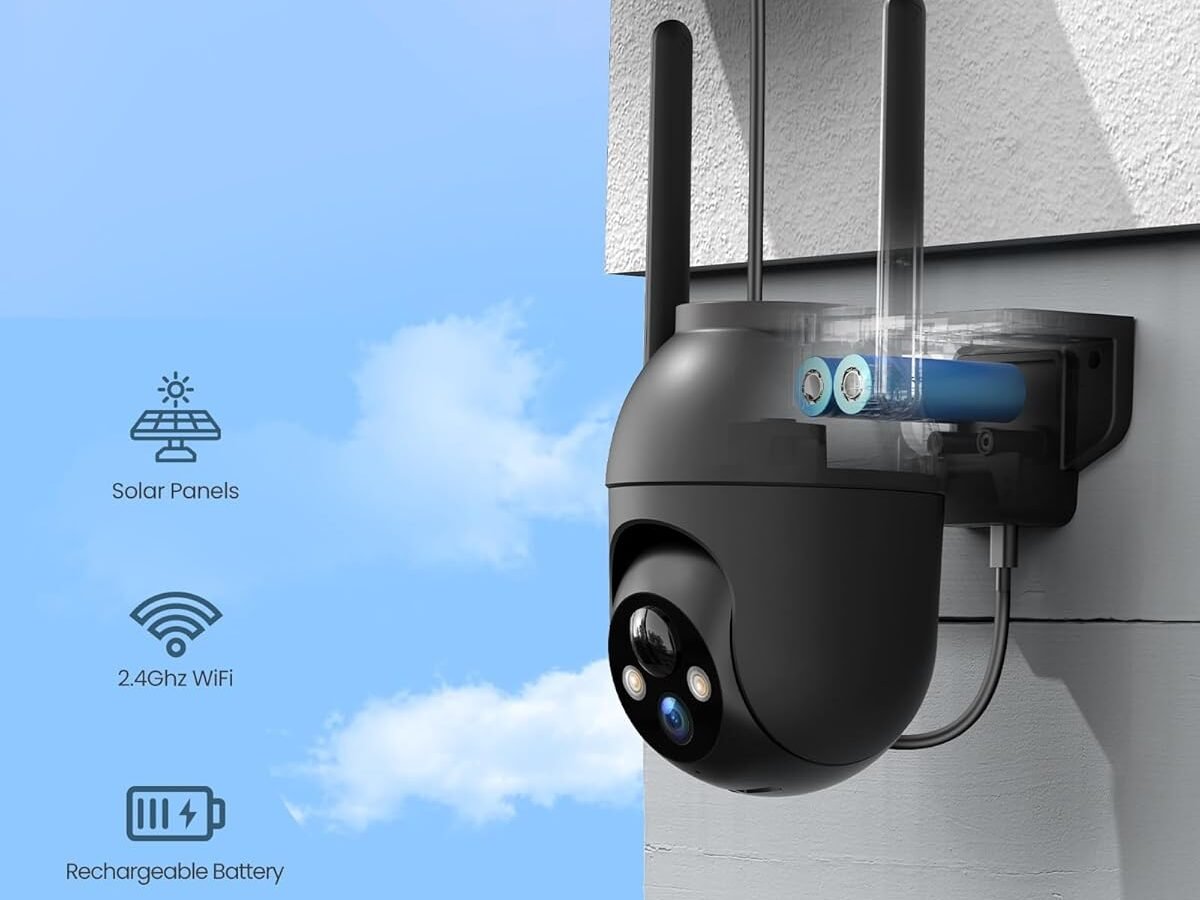
VIMKIM Security Camera~ Versatile Home Surveillance
Key Features
- 360° PTZ Coverage: Rotates 350° horizontally and 115° vertically, providing comprehensive monitoring.
- 2K Color Night Vision: Equipped with infrared LEDs for clear images up to 65ft, even at night.
- Solar Powered: Continuous operation with solar charging, eliminating the need for cables.
- Alarm Sound Feature: Emits a loud alarm to deter intruders or unwanted animals.
- Wireless & Waterproof: IP65-rated for durability, with easy wireless installation.
Best For
- Versatile Home Surveillance: Ideal for those seeking a flexible, all-around security solution with easy setup and continuous power through solar energy.
Pros and Cons Table
| Pros | Cons |
|---|---|
| 360° Coverage: PTZ functionality allows complete monitoring. | Alarm Sound: May disturb neighbors if not carefully managed. |
| 2K Night Vision: Clear, detailed images even in low light. | Limited Indoor Use: Primarily designed for outdoor surveillance. |
| Solar Powered: Ensures continuous operation, reducing maintenance. | Initial Setup: May require time to adjust the PTZ settings. |
| Wireless & Waterproof: Durable and easy to install without cables. | Shipping Costs: High shipping fees for some regions. |
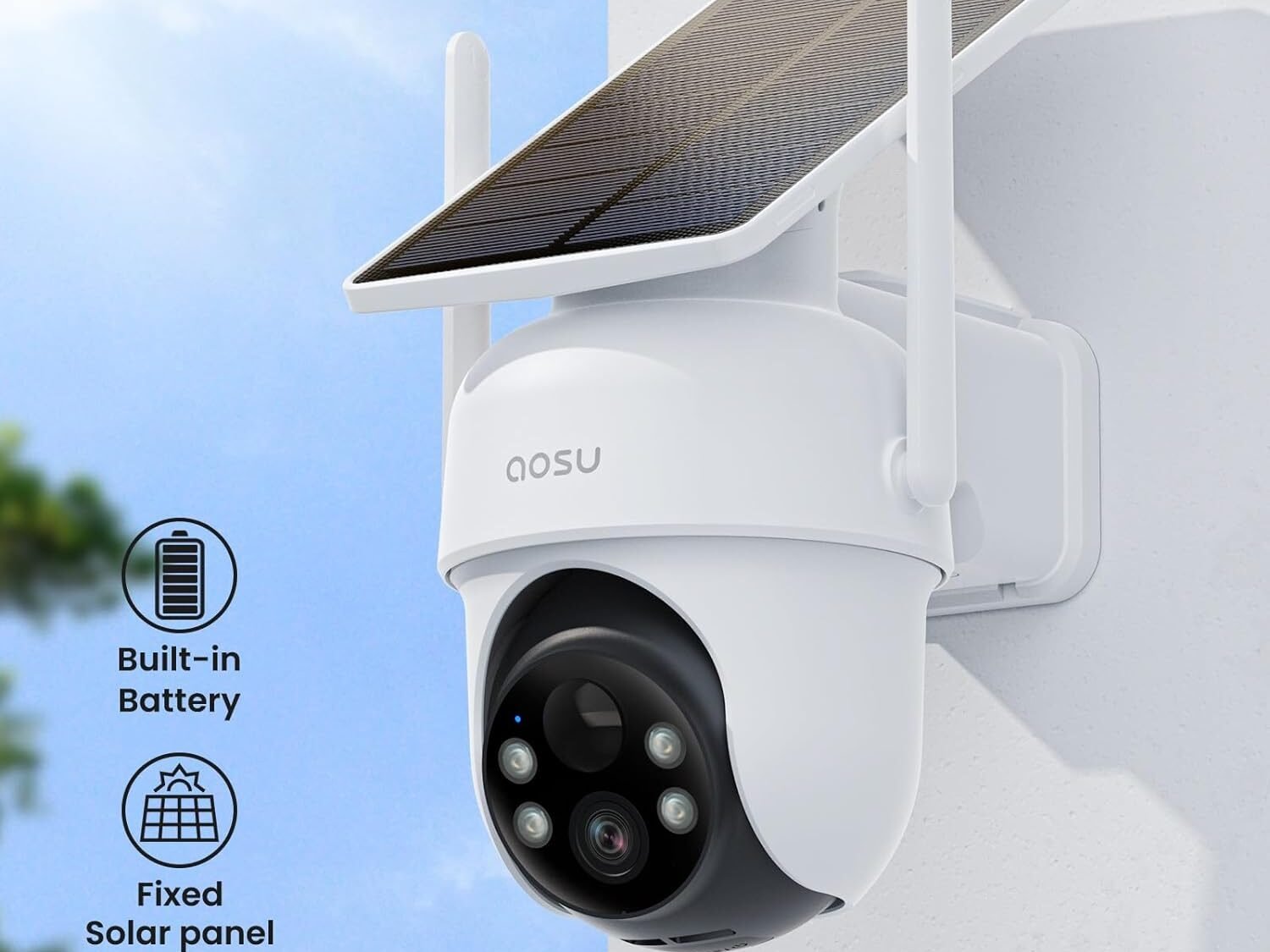
AOSU 2 Cam-Kit Security Camera~Comprehensive Home Security
Key Features
- No Subscription Required: Includes 32GB Homebase for encrypted video storage without ongoing fees.
- Solar-Powered: Built-in solar panel ensures continuous power with just 3 hours of sunlight daily.
- 360° Pan & Tilt: Provides complete area coverage with automatic motion tracking.
- 2K Color Night Vision: Clear, high-resolution footage day and night, aided by four LED lights.
- Cross-Camera Tracking: Seamlessly reviews related events across multiple cameras for easier monitoring.
Best For
- Comprehensive Home Security: Ideal for users who want a subscription-free, solar-powered system with extensive area coverage and intelligent tracking features.
Pros and Cons Table
| Pros | Cons |
|---|---|
| No Monthly Fees: 32GB Homebase for encrypted, cost-free storage. | Initial Setup: May take time to configure multiple cameras. |
| Solar-Powered: Self-sustaining with minimal sunlight required. | Higher Cost: Premium pricing compared to simpler systems. |
| 360° Coverage: Full area monitoring with auto-tracking. | Installation: Must drill holes for mounting, which may not suit renters. |
| 2K Resolution: Sharp, clear images even at night. |
Installation and Placement Tips for Remote Solar Cameras

Choosing the Ideal Location
- Maximize Solar Exposure: Place the solar panel in a spot that receives direct sunlight for most of the day.
- Optimize Camera Coverage: Position the camera to cover key areas without obstruction.
- Consider Accessibility: Ensure the camera is mounted high enough to prevent tampering but accessible for maintenance.
- Avoid Interfering Objects: Keep the camera away from trees or structures that could block the solar panel or interfere with the wireless signal.
CHECK MY POST ON EASY STEPS TO POSITION PANELS FOR OPTIMAL EFFICIENCY
Step-by-Step Installation Guide
- Survey the Area: Identify the best locations for solar exposure and camera coverage.
- Prepare the Mounting Surface: Clean and, if necessary, reinforce the mounting area.
- Install the Mounting Bracket: Securely attach the bracket according to the manufacturer’s instructions.
- Attach the Solar Panel: Connect the solar panel to the mounting bracket, angling it for optimal sun exposure.
- Mount the Camera: Secure the camera unit to its designated mounting point.
- Connect Components: Link the solar panel to the camera unit following the product guide.
- Adjust Settings: Power on the camera and configure its settings, including motion detection sensitivity and alert preferences.
- Test the System: Ensure all components are working correctly and the camera is capturing the intended area.
Professional Installation Considerations
- For complex setups or hard-to-reach locations, consider hiring a professional installer.
- Ensure the installer is familiar with both solar technology and security camera systems.
- Discuss optimal placement for both security coverage and solar efficiency.
- Consider additional equipment like signal boosters for areas with weak cellular coverage.
Maintaining and Troubleshooting Solar Security Cameras for Remote Locations
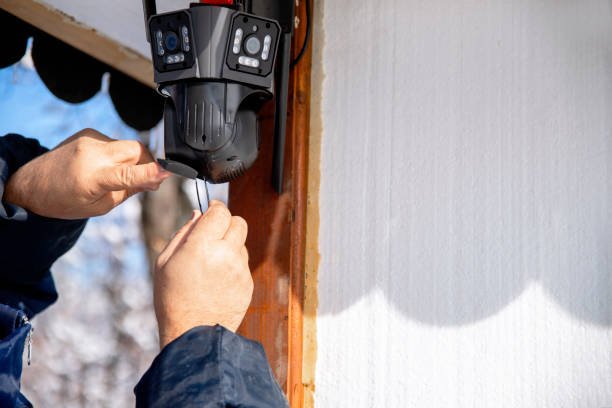
Regular Maintenance Schedule
- Clean Solar Panels: Wipe down panels monthly to ensure maximum efficiency.
- Check Camera Lens: Clean the camera lens quarterly or as needed.
- Inspect Mounting Hardware: Tighten any loose screws or brackets bi-annually.
- Update Firmware: Keep the camera’s software up-to-date for optimal performance.
- Test Motion Detection: Regularly verify that motion detection is working correctly.
Common Issues and Solutions
- Poor Video Quality
- Clean the camera lens
- Check for obstructions in the camera’s field of view
- Verify the wireless signal strength
2. Short Battery Life
- Ensure the solar panel is clean and correctly angled
- Check for shade or obstructions blocking the solar panel
- Adjust camera settings to conserve power
3. Connectivity Problems
- Verify the strength of the cellular or Wi-Fi signal
- Consider a signal booster if in a low-coverage area
- Check for any service outages with your provider
4. False Alarms
- Adjust motion detection sensitivity
- Set up motion zones to exclude areas of frequent movement
- Update the camera’s firmware
When to Seek Professional Help
- If you experience persistent connectivity issues
- For any electrical problems or solar panel malfunctions
- If the camera sustains physical damage
- When you need to relocate or significantly adjust the system
Integrating Solar Security Cameras with Other Security Systems
Compatibility with Existing Setups
- Many solar security cameras can integrate with existing smart home systems.
- Look for cameras that support IFTTT (If This Then That) for custom automation.
- Consider cameras that can work alongside traditional alarm systems.
Creating a Comprehensive Remote Security Network
- Combine solar cameras with solar-powered motion sensor lights.
- Integrate with smart locks for remote access control.
- Use multiple cameras to create a perimeter security system.
- Consider adding solar-powered gate controllers for complete property management.
Smart Home Integration Possibilities
- Connect your solar security cameras to voice assistants like Amazon Alexa or Google Assistant.
- Use smart home hubs to centralize control of all your security devices.
- Set up automated routines, such as turning on lights when motion is detected.
Legal Considerations for Remote Surveillance

Privacy Laws and Regulations
- Familiarize yourself with local and state laws regarding video surveillance.
- Ensure your cameras are not capturing areas where there’s a reasonable expectation of privacy.
- Be aware of audio recording laws, which can be stricter than video recording regulations.
Proper Signage and Notification
- Post visible signs indicating the area is under video surveillance.
- Inform any regular visitors or workers about the presence of security cameras.
- Consider providing information on how individuals can request footage of themselves.
Ethical Use of Solar Security Cameras For Remote Locations
- Use cameras for legitimate security purposes only.
- Respect neighbors’ privacy by angling cameras away from their properties.
- Establish clear policies for accessing and using recorded footage.
FAQs About Solar Security Cameras for Remote Locations
- Q: How long do solar security cameras last?
A: With proper maintenance, solar security cameras can last 5-10 years. The solar panels often have a longer lifespan, typically 20-25 years. - Q: Do solar security cameras work at night?
A: Yes, solar security cameras store energy during the day to power night vision capabilities, allowing them to function 24/7. - Q: Can solar security cameras work in cloudy weather?
A: Yes, most solar security cameras have batteries that store excess energy, allowing them to operate for several days without direct sunlight. - Q: How far can solar security cameras see?
A: The range varies by model, but many can see clearly up to 65 feet during the day and 30-50 feet at night with IR night vision. - Q: Are solar security cameras waterproof?
A: Many solar security cameras are designed for outdoor use and have high IP ratings (IP65 or IP66) for water and dust resistance. - Q: How much data do 4G LTE solar security cameras use?
A: Data usage varies, but on average, a 4G LTE camera might use 50-60 GB per month for continuous HD recording. Usage is lower with motion-activated recording. - Q: Can I access my solar security camera footage remotely?
A: Yes, most solar security cameras offer mobile apps or web portals for remote viewing and management of your cameras. - Q: Do I need Wi-Fi for a solar security camera in a remote location?
A: Not necessarily. Many solar security cameras designed for remote locations use cellular networks (4G LTE) instead of Wi-Fi. - Q: How often do I need to clean the solar panels?
A: It’s recommended to clean the solar panels every 3-6 months, or more frequently in dusty areas. - Q: Can solar security cameras be hacked?
A: Like any internet-connected device, solar security cameras can be vulnerable to hacking. Choose cameras with strong encryption and regularly update passwords to enhance security.
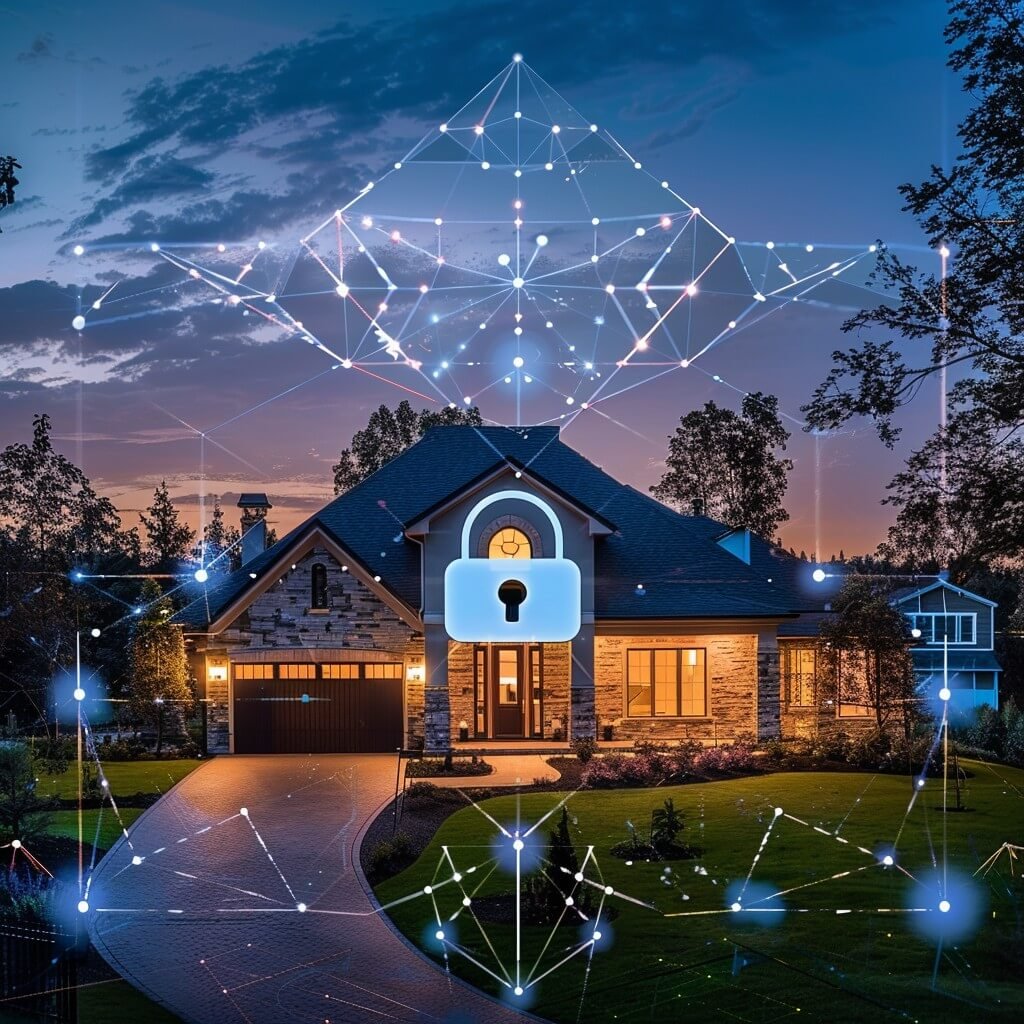
Conclusion: Illuminating the Future of Remote Security
As we’ve explored in this comprehensive guide, solar security cameras for remote locations are more than just a technological novelty – they’re a game-changing solution for off-grid surveillance. By harnessing the power of the sun, these innovative devices offer unparalleled protection for your most isolated assets, all while embracing sustainable, eco-friendly practices.
From the sun-drenched deserts to the remote wilderness, solar security cameras stand as silent sentinels, providing peace of mind no matter how far off the beaten path you roam. They overcome the challenges of remote monitoring with impressive battery life, robust weatherproofing, and advanced connectivity options, ensuring you’re always just a click away from your property.
As you consider implementing solar security cameras for remote locations, remember the key factors we’ve discussed:
- Choose cameras with efficient solar panels and long-lasting batteries.
- Prioritize high-quality video and reliable night vision capabilities.
- Ensure your chosen model can withstand the specific environmental challenges of your location.
- Consider the connectivity options and choose a camera that will maintain a stable connection in your area.
- Don’t forget about the legal and ethical considerations of remote surveillance.
The future of security is bright, and it’s powered by the sun. So why wait? Take the first step towards a more secure, sustainable future for your remote properties. With solar security cameras, you’re not just investing in technology – you’re investing in peace of mind, powered by nature itself.
Remember, in the world of remote security, let the sun be your ally and these solar-powered sentinels your unwavering guardians. Embrace the power of solar security cameras for remote locations, and shine a light on what matters most to you!

